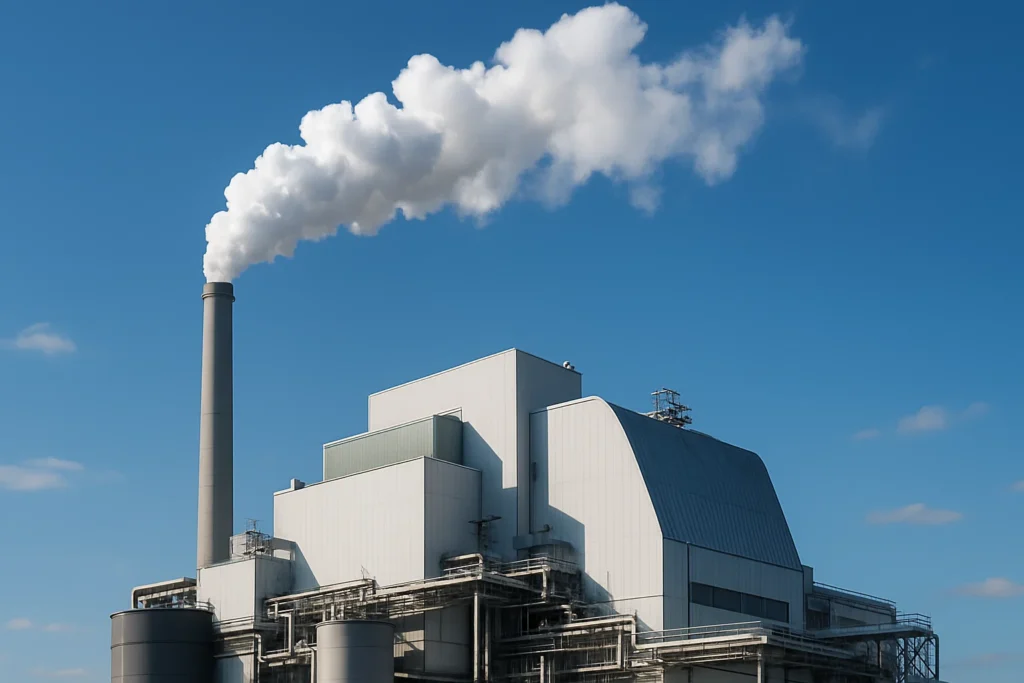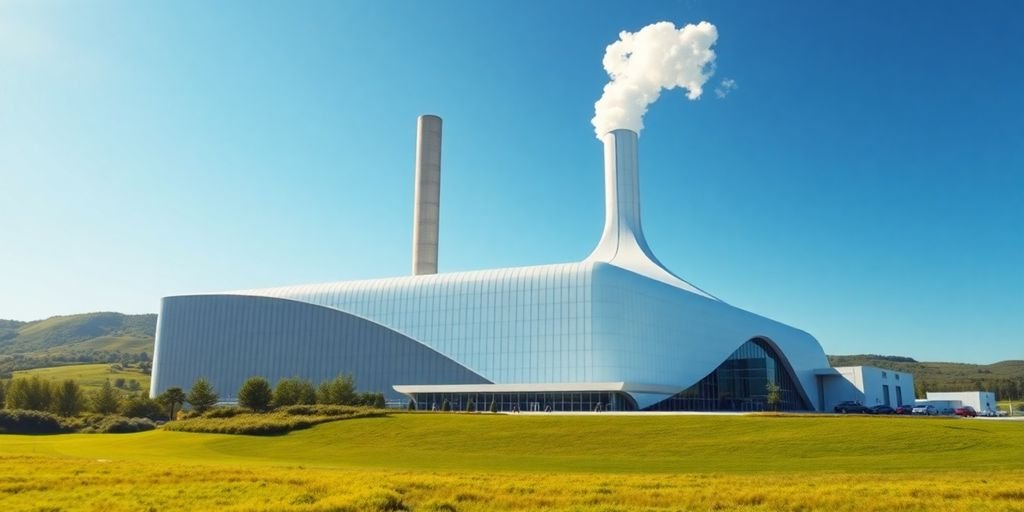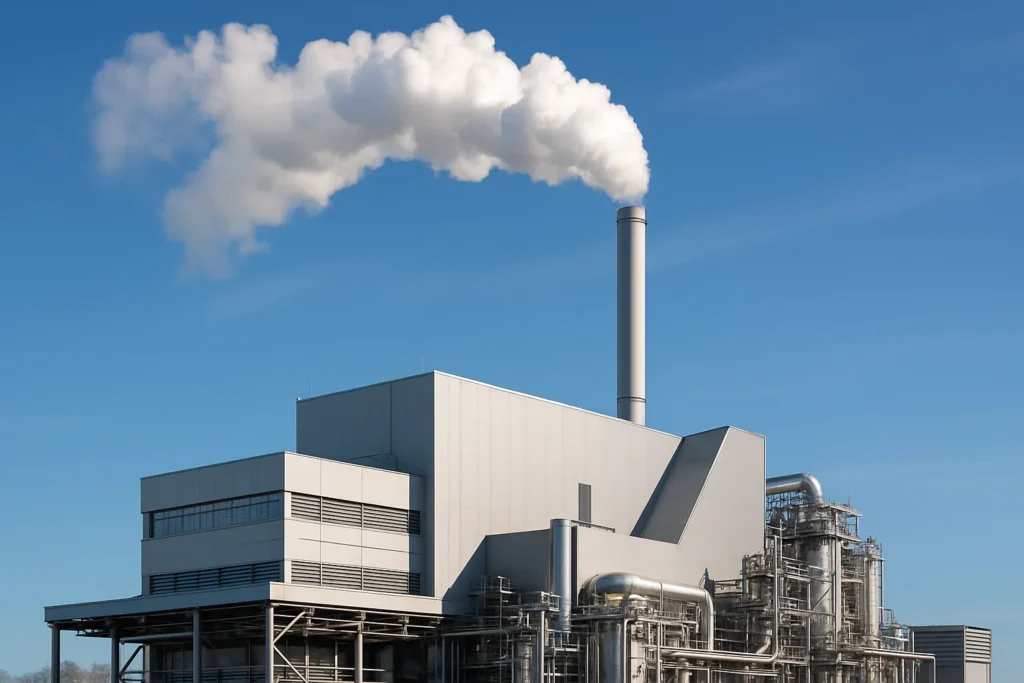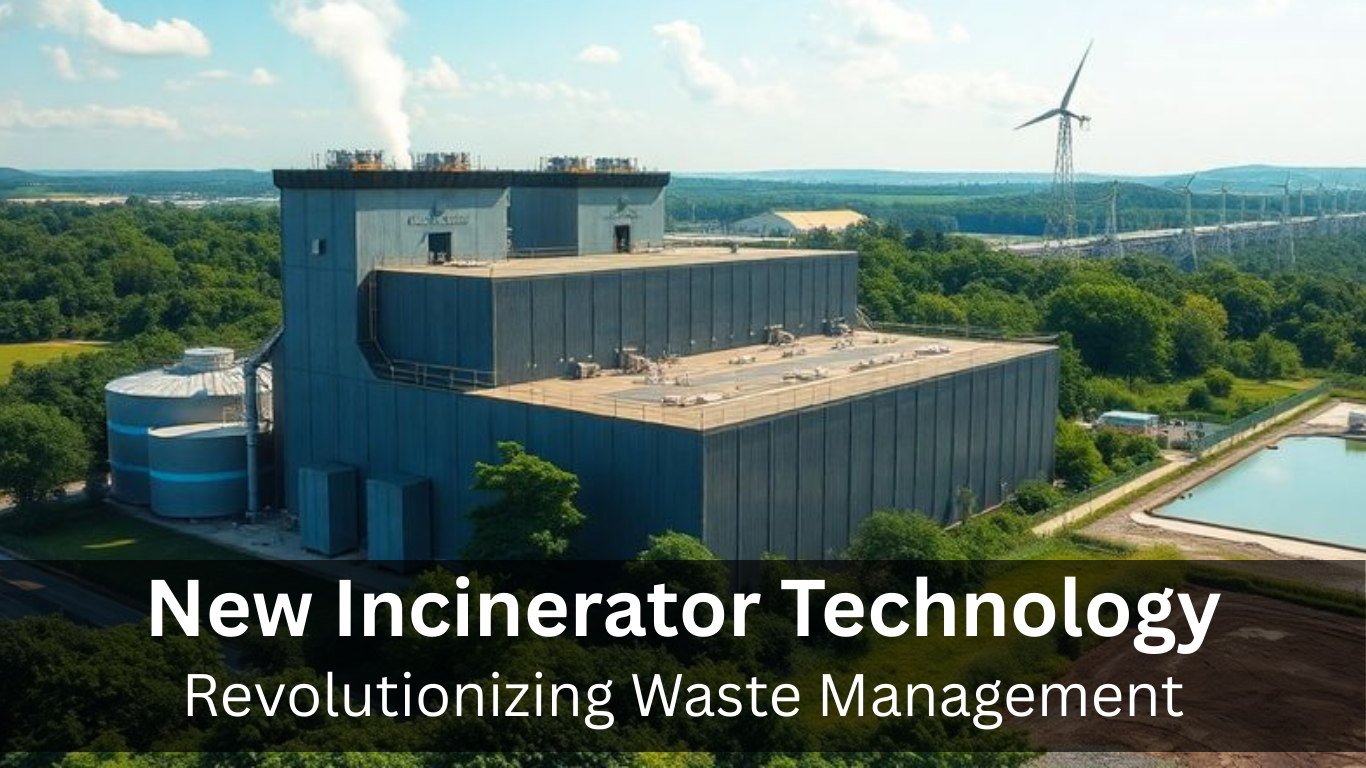The Rise of New Incinerator Technology: Revolutionizing Waste Management
Waste management is a pressing issue as cities grow and waste production increases. Traditional methods like landfills are becoming less viable due to environmental concerns. Enter new incinerator technology, which is changing the game by offering more efficient and cleaner ways to manage waste. This article will look at the latest advancements in incineration, their environmental benefits, and how they are being applied across various industries.
Key Takeaways
- New incinerator technology can significantly reduce waste volume by up to 90%.
- These systems are designed with advanced filtration to minimize harmful emissions.
- Energy recovery from incineration can power operations and reduce reliance on fossil fuels.
- The market for innovative incinerators is expanding due to stricter environmental regulations.
- Investors see potential in the growing demand for efficient waste management solutions.
Innovations In New Incinerator Technology

Smart Waste Management Solutions
Smart waste management is changing how we think about trash. The integration of sensors and data analytics into advanced waste-to-energy incinerator systems allows for real-time monitoring and optimization of the incineration process. This means better efficiency, reduced emissions, and proactive maintenance. Imagine a system that can adjust temperature and airflow based on the composition of the waste being burned. That’s the power of smart incineration.
- Remote monitoring for performance.
- Predictive maintenance to avoid downtime.
- Data-driven optimization of burning parameters.
Energy Recovery Systems
These systems are designed to capture the heat generated during incineration and convert it into usable energy. This can be in the form of electricity, steam, or hot water. It’s a win-win: less waste and more power. sufficient energy can be generated to power homes.
- Waste heat boilers.
- Steam turbines for electricity generation.
- Combined heat and power (CHP) systems.
Energy recovery systems are not just about generating power; they’re about creating a circular economy where waste becomes a resource. This approach reduces our reliance on fossil fuels and minimizes the environmental impact of waste disposal.
Advanced Filtration Techniques
One of the biggest concerns about incineration is air pollution. That’s where advanced filtration comes in. These techniques remove harmful pollutants from the flue gas before it’s released into the atmosphere. We’re talking about things like particulate matter, nitrogen oxides, and sulfur dioxide. Eco-friendly incinerator technology for hazardous waste reduction is becoming more common.
- Fabric filters (baghouses).
- Selective catalytic reduction (SCR) for NOx control.
- Activated carbon injection for mercury removal.
These filtration systems are crucial for ensuring that environmentally friendly incineration technology meets stringent environmental regulations. The goal is to make sure that cutting-edge thermal treatment for municipal waste is as clean as possible.

Environmental Impact of New Incinerator Technology
Reducing Landfill Dependency
Landfills are filling up, and nobody wants to live near one. New incinerator technology offers a way out. By burning waste, we can drastically reduce the amount of trash that ends up in landfills. This not only saves space but also helps to prevent the harmful effects of landfills, like soil and water contamination. waste incineration reduces the volume of waste by up to 90%, which is a huge win for the environment.
Lowering Carbon Emissions
It might sound counterintuitive, but modern incinerators can actually help lower carbon emissions. This is especially true when they’re designed with energy recovery systems. Instead of just burning waste, these systems capture the heat and turn it into electricity. This reduces our reliance on fossil fuels, leading to a smaller carbon footprint. It’s like turning trash into treasure, or at least, into usable energy.
Controlling Air Pollution
One of the biggest concerns about incinerators is air pollution. Older models had a bad reputation for releasing harmful pollutants into the air. But new incinerator technology is equipped with advanced filtration systems. These systems include scrubbers and carbon filters that capture particulate matter, volatile organic compounds (VOCs), and gases like carbon monoxide (CO) and nitrogen oxides (NOx). The goal is to make sure the incineration process is both effective and eco-friendly. Here’s a quick look at how these systems work:
- Scrubbers: Remove acidic gases.
- Carbon Filters: Capture VOCs and odors.
- Particulate Filters: Trap dust and soot.
Modern incinerators are designed to meet strict environmental regulations. They’re a far cry from the old, polluting incinerators of the past. The focus is on minimizing emissions and protecting air quality.
With these advancements, the impact on air quality is significantly reduced, making new incinerator technology a much cleaner option.
Applications Across Industries
New incinerator technology isn’t just some niche thing; it’s popping up all over the place, tackling waste problems in different sectors. It’s pretty cool to see how versatile it is.
Healthcare Waste Management
Hospitals and clinics generate a ton of waste, and a lot of it is hazardous. Think used needles, contaminated materials, and pharmaceutical leftovers. Traditional disposal methods can be risky and expensive. New incinerator tech offers a safer and more efficient way to handle this stuff right on-site. This reduces the risk of spreading infections and cuts down on transportation costs. Plus, some systems can even recover energy from the process, which is a nice bonus.
Residential Waste Solutions
Okay, so maybe you won’t have a mini-incinerator in your backyard (though, who knows what the future holds?). But new incinerator tech is making its way into residential waste management in a few ways. For example, some communities are using small-scale incineration facilities to process waste that can’t be recycled. This reduces the amount of trash going to landfills and can even generate heat or electricity for the neighborhood. It’s all about finding ways to deal with our garbage more sustainably.
Industrial Waste Disposal
Factories and manufacturing plants create all sorts of waste, from plastics and chemicals to scrap metal and packaging. Disposing of this stuff can be a real headache, especially when it comes to hazardous materials. New incinerator technology offers a way to break down these complex wastes into simpler, less harmful substances.
It’s not a perfect solution, but it’s often a better option than sending everything to a landfill or shipping it off to some far-off location for processing. Plus, some industrial incinerators are designed to recover valuable materials from the waste stream, which can be a win-win for both the environment and the company’s bottom line.
Here’s a quick look at some common industrial waste types and how incineration can help:
- Plastics: Incineration can reduce the volume of plastic waste and recover energy.
- Chemicals: Specialized incinerators can neutralize hazardous chemicals.
- Scrap Metal: Some systems can recover valuable metals from scrap.
Market Growth and Investment Opportunities
The waste management industry is undergoing major changes, driven in part by advances in incinerator technology. It’s no longer just about disposing of trash—it’s about doing so sustainably and economically, with an eye toward environmental impact and long-term efficiency. Let’s take a look at what’s driving the market and where the opportunities lie.
Rising Demand for Sustainable Solutions
People are starting to realize that the old ways of dealing with waste just aren’t cutting it. Landfills are filling up, and nobody wants one in their backyard. Plus, there’s a growing awareness of the environmental impact of just burying our trash. This is creating a big push for sustainable waste management solutions, and new incinerator technology is stepping up to fill that need.
- Stricter environmental rules are forcing companies and cities to find cleaner ways to get rid of waste.
- There’s a big focus on reducing how much waste ends up in landfills.
- Consumers and businesses alike are looking for eco-friendly options.
It’s not just about ticking boxes; people genuinely want to do better for the environment. This shift in mindset is a huge driver for the growth of new incinerator technology.
Technological Advancements Driving Growth
It’s not your grandpa’s incinerator anymore. These new systems are packed with tech that makes them way more efficient and environmentally friendly. We’re talking about things like advanced combustion systems that burn waste more completely and filtration systems that scrub out harmful pollutants. Plus, some of these incinerators can even turn waste into energy, which is a total game-changer.
- Smart incinerators use IoT to monitor performance and make adjustments on the fly.
- Low-emission tech is constantly improving to reduce air pollution.
- Energy recovery systems are turning waste into a valuable resource.
Investment Trends in Waste Management
So, where’s the money going? Well, investors are starting to see the potential in this space. As the demand for sustainable waste management grows, companies that are developing and deploying new incinerator technology are becoming attractive targets. It’s not just about the big players, either. There’s also a lot of interest in smaller, more modular systems that can be used in a variety of settings.
Here’s a quick look at some potential investment areas:
- Companies that make small waste incinerators, especially in rapidly urbanizing areas.
- Startups that are developing innovative waste-to-energy technologies.
- Projects that are building new incineration facilities or upgrading existing ones.
Challenges Facing New Incinerator Technology

Regulatory Compliance Issues
Navigating the regulatory landscape can be a real headache. Different regions have different rules, and keeping up with the changes is a constant battle. It’s not just about getting permits; it’s about staying compliant with emissions standards, waste handling procedures, and a whole bunch of other stuff. This can add significant costs and delays to projects. The small size waste incinerator market is growing, and regulations need to keep up.
Public Perception and Acceptance
Let’s be honest, incinerators don’t exactly have the best reputation. People often associate them with pollution and health risks, even though modern technology has come a long way in addressing those concerns. Overcoming this negative perception is a major hurdle. It requires a lot of public education, transparency, and community engagement to build trust and demonstrate that these new incinerators are safe and environmentally sound.
Here are some common concerns:
- Fear of air pollution
- Distrust of government and industry
- Lack of understanding about modern technology
It’s important to address public concerns head-on. Open communication and community involvement are key to gaining acceptance for new incinerator projects.
Technological Limitations
While new incinerator technology is impressive, it’s not perfect. There are still limitations in terms of the types of waste that can be processed, the efficiency of energy recovery, and the ability to completely eliminate emissions. Plus, these advanced systems can be complex and require specialized expertise to operate and maintain. Continuous research and development are essential to overcome these limitations and improve the performance of incinerator technology.
Here’s a quick look at some of the challenges:
| Challenge | Description |
|---|---|
| Waste Stream Variability | Incinerators need to handle different types of waste, which can affect their performance. |
| Maintenance Requirements | Advanced systems require regular maintenance and specialized technicians. |
| Initial Investment Costs | The upfront costs of building a new incinerator can be substantial. |
Future Trends in Waste Management
Integration of IoT in Incineration
It’s pretty clear that the future of waste management is going to be heavily influenced by the Internet of Things (IoT). Imagine incinerators that can self-monitor, adjust their operations for peak efficiency, and even predict maintenance needs before a breakdown happens. This level of smart technology will not only optimize the incineration process but also reduce downtime and operational costs.
- Remote monitoring of temperature and emissions.
- Predictive maintenance alerts.
- Automated adjustments for optimal burning.
Emerging Technologies in Waste Processing
Beyond just burning stuff, we’re seeing some really cool new technologies pop up. Think about turning waste into valuable resources, like fuel or even new materials. Plasma gasification, for example, can break down waste at super high temperatures, creating a gas that can be used to generate electricity. It’s like magic, but with science!
These advancements promise to not only reduce the amount of waste going to landfills but also create new revenue streams from what was once considered trash. It’s a win-win for the environment and the economy.
Global Market Projections
The global waste management market is expected to keep growing, driven by increasing urbanization and stricter environmental regulations. The demand for sustainable solutions is rising, and that means more investment in new incinerator technology. The environmental benefits of new technologies are clear. Here’s a quick look at how things might shape up:
| Region | Projected Growth Rate (CAGR) | Key Drivers |
|---|---|---|
| North America | 5.2% | Stringent regulations, tech adoption |
| Europe | 4.8% | Focus on circular economy, waste reduction |
| Asia-Pacific | 6.5% | Rapid urbanization, industrial growth |
This growth presents significant opportunities for companies involved in the development and deployment of advanced waste management systems. Portable incinerators are also becoming more common.
Final Thoughts on the Future of Waste Management
In conclusion, small size waste incinerators are changing the game in waste management. They provide a practical and eco-friendly way to deal with waste, especially in places where traditional methods fall short. With new tech making these incinerators smarter and cleaner, we’re looking at a future where waste disposal is not just easier but also better for the planet. As more people and businesses recognize the benefits, the demand for these systems will likely keep growing. This is a chance for investors and innovators to jump in and make a real difference in how we handle waste. It’s an exciting time for waste management, and small incinerators are leading the charge.

Frequently Asked Questions
What are new incinerator technologies?
New incinerator technologies are modern systems designed to burn waste efficiently. They help reduce the amount of waste by turning it into ash and energy, making waste disposal cleaner and safer.
How do these incinerators help the environment?
These incinerators reduce the need for landfills, lower harmful emissions, and clean the air through advanced filters. They also help recover energy, which can be used for power.
Can these incinerators handle medical waste?
Yes, there are special incinerators made for medical waste. They safely destroy dangerous items like needles and infected materials to prevent harm.
Which industries use new incinerator technology?
Industries like healthcare, food processing, and manufacturing use these incinerators. They help manage waste safely and efficiently.
Why is there a growing market for incinerators?
The market is growing because more people want eco-friendly waste solutions. Stricter rules about waste disposal also push businesses to adopt these technologies.
What challenges do new incinerators face?
Some challenges include meeting government regulations, gaining public trust, and keeping up with technology. These can affect how quickly new systems are adopted.









One Comment